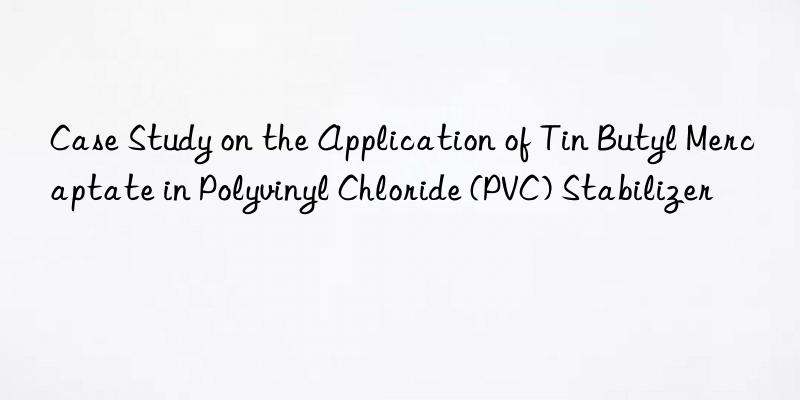
Introduction
Butylmercaptostannane, chemical formula C4H10OSSn, CAS number 26410-42-4, is an efficient organotin stabilizer that is widely used in polyvinyl chloride (PVC) products to improve the thermal stability of the material. Stability and processing performance. PVC is an extremely important thermoplastic, but it has poor thermal stability and is prone to degradation during processing, resulting in reduced product performance. Therefore, adding appropriate stabilizers is crucial to ensuring the quality of PVC products.
Characteristics of butyltin mercaptide
As a thiol metal compound, butyltin mercaptide has good thermal stability and transparency, and can effectively inhibit the dehydrochlorination reaction of PVC at high temperatures and prevent polymer chain breakage, thus extending the service life of PVC. . In addition, it can provide good initial coloration and long-term stability, allowing PVC products to maintain their original color and mechanical properties.
Application cases
In the production of rigid PVC products, such as profiles, pipes and sheets, tin butylmercaptide is used as a primary stabilizer or part of a co-stabilizer. For example, a PVC profile manufacturer discovered during the production process that the traditionally used calcium zinc stabilizer could not meet the strict requirements of some high-end markets. Especially for products for long-term outdoor use, its weather resistance and color stability were obviously insufficient.
To address this issue, the manufacturer began evaluating and testing the possibility of tin butyl mercaptide as a stabilizer. After a series of laboratory tests and small-scale production tests, the results show that after adding an appropriate amount of butyltin mercaptide, the thermal stability and color stability of PVC profiles are significantly improved. Even under long-term outdoor exposure conditions, the product It can also maintain a low yellowing index without significant decrease in mechanical strength.
Implementation details
In the specific implementation process, the amount of butyltin mercaptide added needs to be adjusted according to the specific requirements of the PVC formula and the expected performance targets. Generally speaking, the addition amount is between 0.1% and 0.5% to achieve good stabilizing effect. In order to ensure uniform dispersion, butyltin mercaptide is usually added to PVC resin during the mixing stage together with other auxiliary stabilizers (such as antioxidants, light stabilizers) and lubricants.
Results and discussion
After the optimized formula, PVC profiles not only show excellent processing fluidity and colorability in the initial processing stage, but also have significantly improved physical properties and appearance quality during the subsequent use cycle. Especially in outdoor environments, the addition of butyltin mercaptide extends the service life of PVC profiles from the original 5-7 years to more than 10 years, greatly improving the market competitiveness of the product.
Conclusion
As a high-performance PVC stabilizer, tin butyl mercaptide can effectively improve the thermal stability and long-term durability of PVC products through its unique chemical structure and mechanism of action. In the PVC processing industry, rational selection and optimization of stabilizer systems are of great significance to the development of high-quality, high value-added PVC products.
References
This case study is based on industry experience and public literature. Specific values and case details may vary depending on the experimental conditions of different manufacturers. For more detailed information, it is recommended to refer to professional literature and reports in the relevant field.
Please note that the above case study is constructed based on a general understanding of the properties and applications of tin butyl mercaptide and is not based on a specific actual industrial case . In practical applications, the performance of butyltin mercaptide may be affected by a variety of factors, including but not limited to the type of PVC resin, processing conditions, blend composition, etc. Therefore, when selecting and using butyltin mercaptide as a stabilizer, sufficient testing and evaluation should be carried out to ensure the best results.
Extended reading:
bismuth neodecanoate/CAS 251-964-6 – Amine Catalysts (newtopchem.com)
stannous neodecanoate catalysts – Amine Catalysts (newtopchem.com)
polyurethane tertiary amine catalyst/Dabco 2039 catalyst – Amine Catalysts (newtopchem.com)
N-Methylmorpholine – morpholine

 微信扫一扫打赏
微信扫一扫打赏

